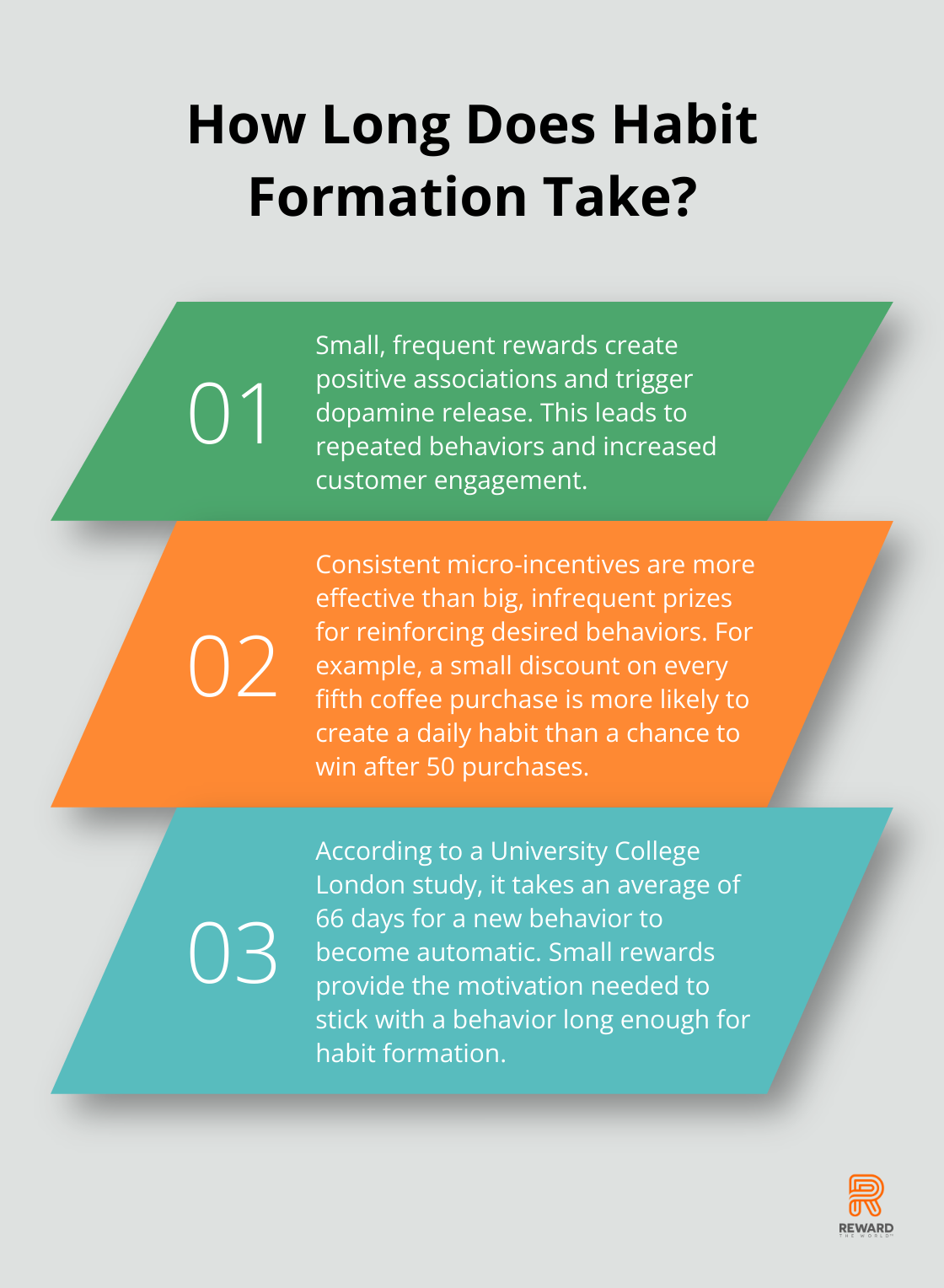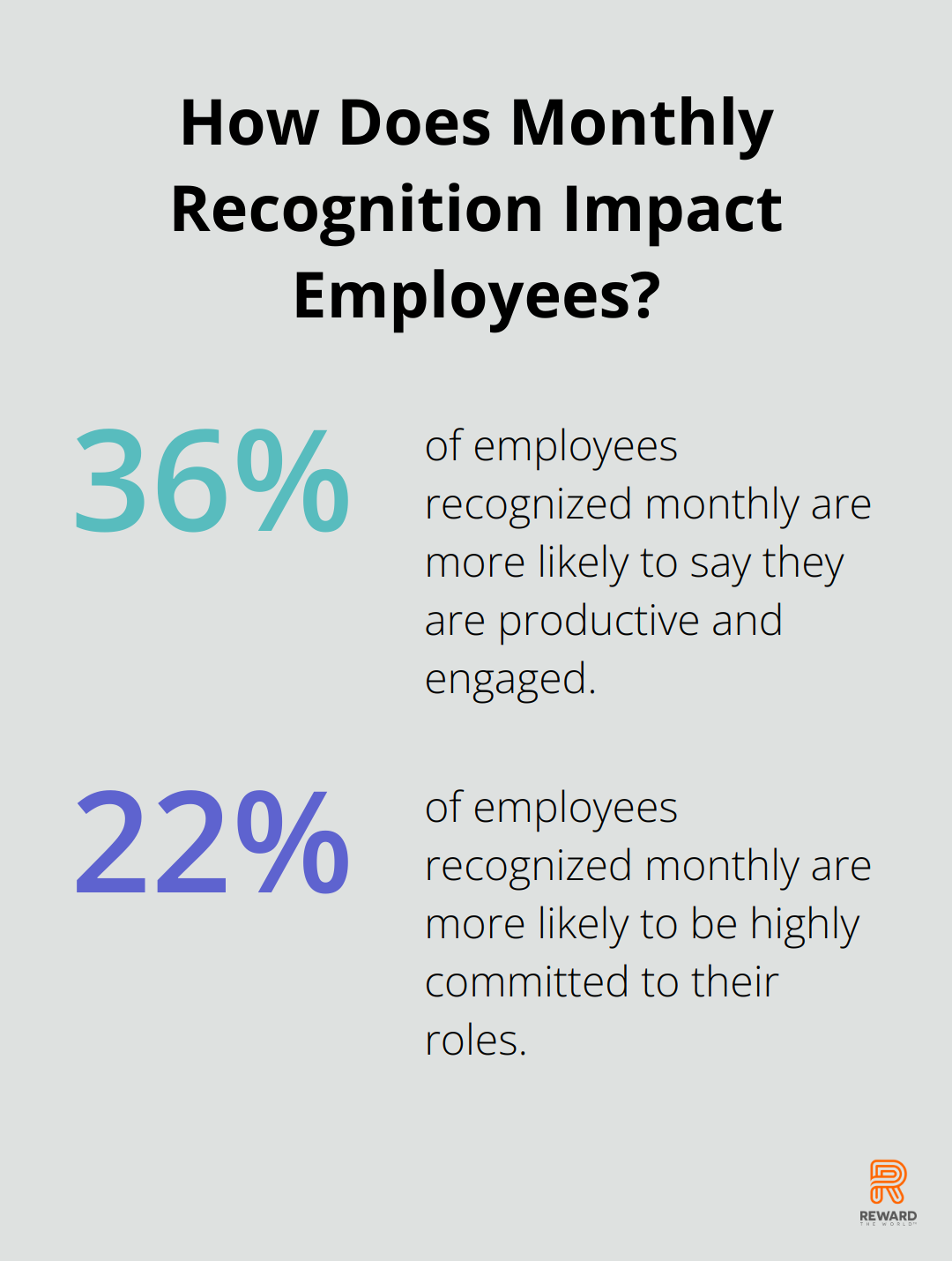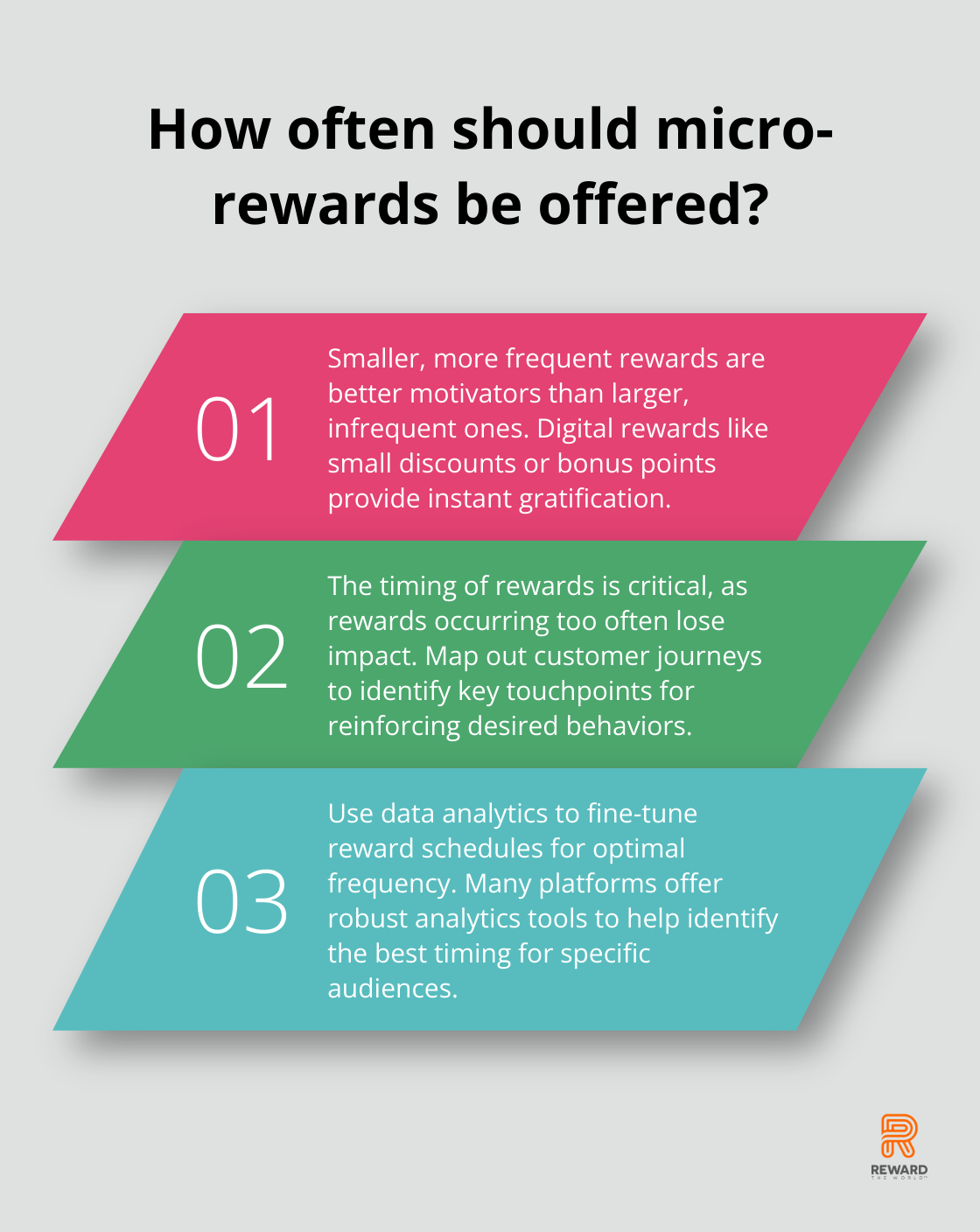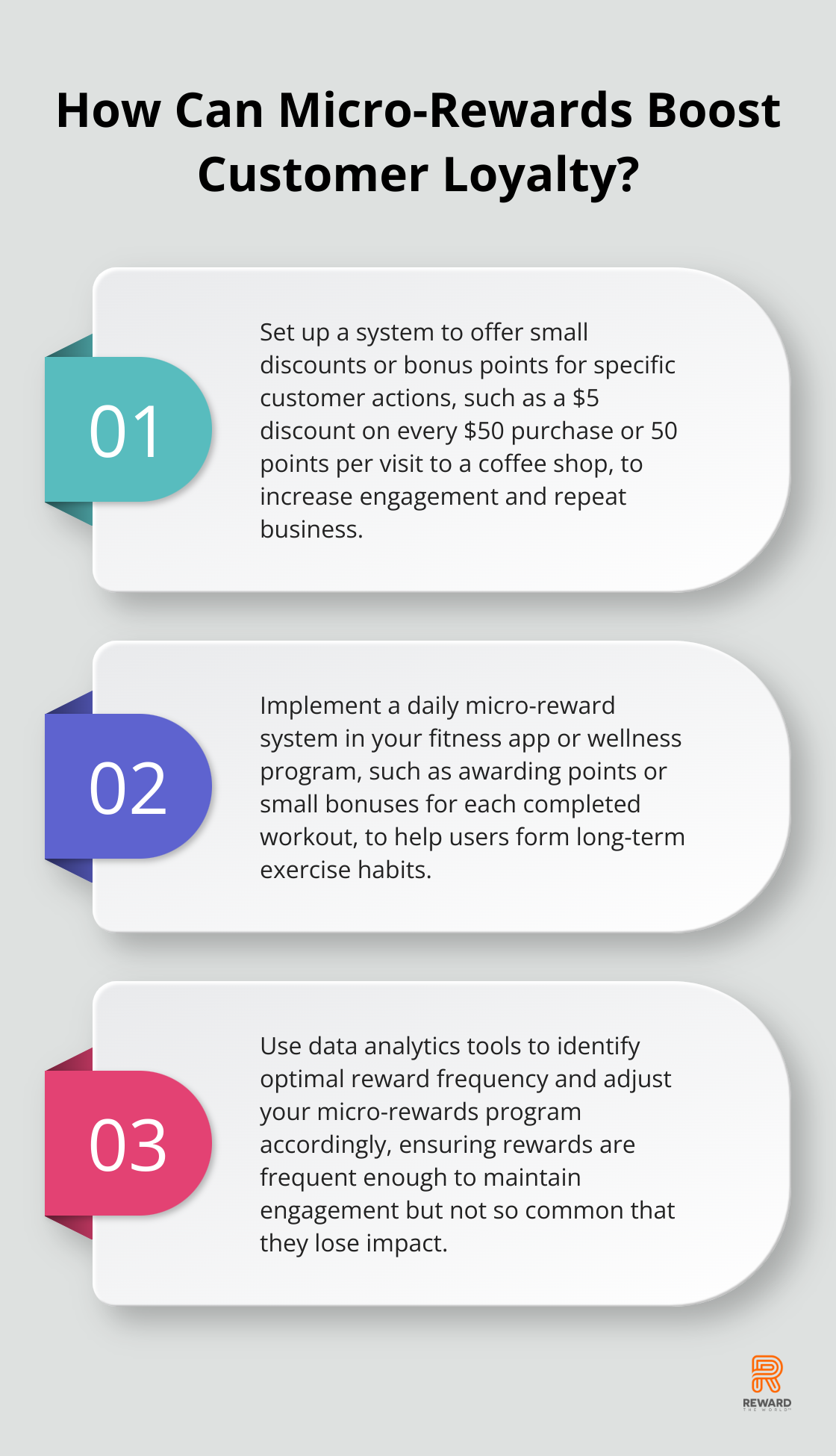
At Reward the World, we’ve seen a shift in how businesses approach customer incentives. The traditional model of big, infrequent prizes is being challenged by a new strategy: micro-rewards.
These small, frequent incentives are changing the game in customer engagement and loyalty programs. But can they really outperform their larger counterparts?
Let’s explore the psychology, effectiveness, and implementation of micro-rewards to find out.
Why Small Rewards Pack a Big Punch
Small, frequent rewards are revolutionizing customer engagement. These micro-incentives drive behavior and boost loyalty more effectively than big, infrequent prizes.
The Power of Instant Gratification
Our brains love immediate rewards. When we receive a small incentive, it triggers a dopamine release. This creates a positive association with the action that led to the reward. For businesses, this means customers will likely repeat behaviors that earn them these quick wins.
Reinforcing Positive Behaviors
Frequent rewards create a steady stream of positive reinforcement. This consistent feedback loop helps solidify desired behaviors. For example, a coffee shop offering a small discount on every fifth purchase will more likely create a daily coffee habit than a shop offering a chance to win a big prize after 50 purchases.
Creating Lasting Habits
Small, regular rewards excel at habit formation. A study by University College London found it takes an average of 66 days for a new behavior to become automatic. Micro-incentives provide the motivation needed to stick with a behavior long enough for it to become a habit.

Businesses can leverage this by offering small rewards for actions they want customers to repeat (such as logging into an app daily or making regular purchases). Over time, these actions become ingrained, leading to long-term customer loyalty.
Implementing Micro-Rewards Effectively
In practice, a micro-rewards system can yield high effectiveness. For instance, a fitness app might offer small point bonuses for each completed workout, rather than a big prize for reaching a distant goal. This approach keeps users engaged daily, increasing the likelihood they’ll stick with their fitness routine long-term.
The key is to make rewards meaningful yet attainable. Too small, and they won’t motivate; too large or infrequent, and they lose their immediate appeal. Finding the right balance maximizes the psychological impact of your incentive program.
Now that we understand the psychological power of small rewards, let’s compare their effectiveness to traditional big prizes in the next section.
Are Small Incentives More Effective Than Big Prizes?
Cost-Effectiveness and ROI
Small incentives typically offer a higher return on investment compared to big prizes. Employees that are recognized monthly are 36% more likely to say they are productive and engaged, and 22% more likely to be highly committed to their roles.

A retail store offering a $5 discount on every $50 purchase might see more consistent sales growth than one offering a chance to win a $1000 shopping spree. The steady stream of small rewards keeps customers coming back, while the big prize might only attract a surge of one-time participants.
Boosting Engagement and Participation
Micro-rewards dramatically increase customer participation rates. This higher engagement translates to more touchpoints with your brand. A coffee shop loyalty app offering 50 points per visit (redeemable for small items) will likely see daily customer interactions. In contrast, a program requiring 5000 points for a free large item might only engage customers sporadically.
Driving Long-Term Behavioral Changes
The most significant advantage of small, frequent incentives is their ability to shape long-term customer behavior. This effect is particularly powerful in habit-forming industries. A fitness app offering daily micro-rewards for workout completion is more likely to create lasting exercise habits than one promising a big prize for a 6-month goal.
Combining Strategies for Maximum Impact
The most effective programs often combine both approaches. Some platforms allow businesses to offer a mix of instant small rewards and entries into larger prize drawings, catering to different customer motivations.
Small, frequent incentives prove to be a formidable tool in the modern business arsenal. They leverage the psychological power of immediate gratification and the long-term benefits of habit formation. The next section will explore how to implement these micro-reward programs effectively in your business strategy.
How to Launch an Effective Micro-Rewards Program
Select Impactful Rewards
The success of a micro-rewards program hinges on choosing incentives that resonate with your audience. A study found that smaller, more frequent rewards are better motivators than larger, infrequent ones. This highlights the importance of offering rewards with immediate value.

Digital rewards such as small discounts, bonus points, or exclusive content access provide instant gratification. A streaming service could offer a 24-hour ad-free experience after five consecutive days of app usage. Physical micro-rewards also prove effective. A cosmetics retailer might offer sample-sized products for every $20 spent, encouraging customers to try new items without significant investment.
Optimize Reward Frequency
The timing of rewards plays a critical role. Rewards that occur too often lose impact, while sparse rewards lead to disengagement.
Map out your customer journey and identify key touchpoints where rewards reinforce desired behaviors. An e-commerce platform could offer a small discount after 10 minutes of browsing, another after adding an item to the cart, and a final one at checkout.
Use data analytics to fine-tune your reward schedule. Many platforms offer robust analytics tools to help identify the optimal frequency for your specific audience.
Integrate with Existing Programs
For businesses with established loyalty programs, integrating micro-rewards can amplify overall effectiveness.
Audit your current loyalty program and identify areas where micro-rewards complement existing benefits. If you have a points-based system, introduce micro-rewards that allow customers to earn bonus points for specific actions.
Ensure your micro-rewards align with your brand values and overall customer experience. A sustainable fashion brand might offer eco-friendly tips or small donations to environmental causes as micro-rewards (reinforcing their brand identity).
Communicate Clearly
Transparency boosts program adoption and engagement. Communicate the addition of micro-rewards clearly to your customers. Highlight how these new incentives enhance the value of their existing loyalty membership.
Choose the Right Platform
Selecting a robust rewards platform forms the foundation of a successful micro-rewards program. Reward the World offers guidance on navigating the best reward and recognition platforms available for businesses of all sizes.
Final Thoughts
Small, frequent incentives have revolutionized customer engagement strategies. These micro-rewards tap into the psychology of instant gratification, creating a positive feedback loop that reinforces desired actions. Businesses can foster habits that lead to increased loyalty and sales through the immediate value these incentives offer.

The cost-effectiveness of micro-rewards outweighs traditional big-prize models. Lower individual costs and higher participation rates often yield a better return on investment (ROI). Micro-rewards also allow for more frequent touchpoints with customers, keeping brands top-of-mind and encouraging repeat interactions.
We at Reward the World have witnessed how micro-rewards transform customer engagement strategies. Our platform provides the flexibility and scalability needed to implement effective micro-reward programs across various industries. Businesses can easily tailor their programs to meet specific objectives and customer preferences with our instant reward delivery and vast selection of incentives.
